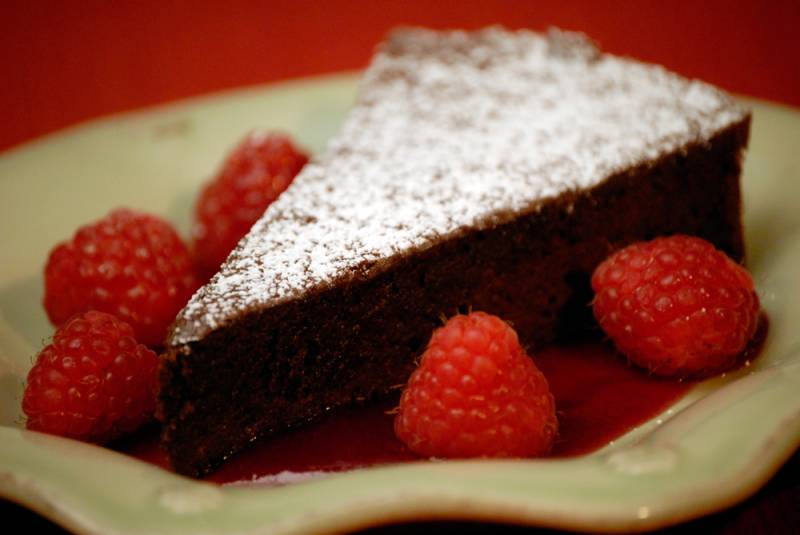Preheat the oven to 325 degrees.
FOR THE CAKE: Grease a 3-inch-deep 9-inch round cake pan or springform with 1 teaspoon of the oil.
Combine the chocolate, butter, the remaining 5 teaspoons oil, and the sugar in the top of a double boiler (or in a microwave-safe bowl) and cook over boiling water (or in the microwave) until the chocolate and butter have melted. Stir to combine. Add the potato starch and mix it in with a whisk. Remove from the heat and whisk in the egg yolks; the mixture will thicken.
Whip the egg whites in a large bowl until firm. Fold them lightly and as quickly as possible into the chocolate mixture.
Pour the batter into the pan, and bake for about 20 to 25 minutes. The cake should still be soft in the center. Let cool to lukewarm.
Invert the cake onto a plate, then invert again so it’s top side up onto a serving platter (or remove the sides of the springform pan and transfer the cake to the platter). Sprinkle with the confectioners’ sugar.
FOR THE SAUCE: If not using seedless preserves, strain and combine with the rum and water.
To serve, arrange a slice of cake on each of six to eight dessert dishes and spoon some sauce alongside.
POTATO STARCH
I often use a “pure starch” — generally potato starch or arrowroot — to finish a sauce and give it a bit of viscosity. If nothing else is available, you can substitute cornstarch, but it tends to make a sauce gooey and gelatinous. I prefer potato starch, which is made from steamed potatoes that are dried and ground. Potato starch is gluten-free and sometimes appears in baked goods, particularly Jewish-Passover specialties. Inexpensive and available in 1-pound packages, it can be found in the Kosher section of many supermarkets and in Asian specialty food shops (it is also used in Japanese cooking). Arrowroot, on the other hand, comes in very small containers and is very expensive.
All of these starches are used in the same way: they are diluted with a little cold liquid — water, wine, or stock — and then stirred into a hot sauce. The starch thickens the sauce on contact and then it is usually brought to a boil.
Copyright © 2011 by Jacques Pépin. Used by permission of Houghton Mifflin Harcourt. All rights reserved.
More Essential Pépin television episode information
